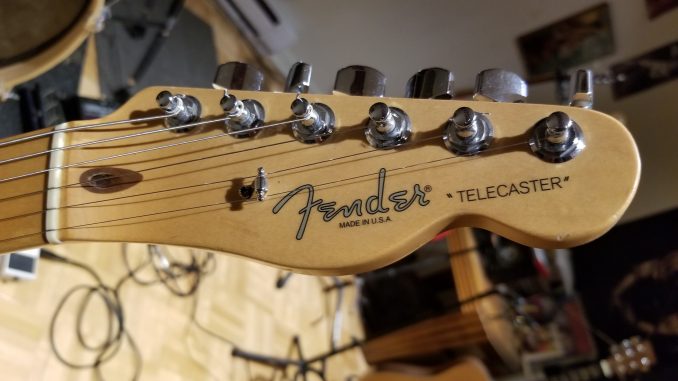
What Guitars Can Be Aged?
Pretty much any! Even though this booklet concentrates in Stratocasters and Telecasters, you can use any of the information here to age any brand or type of guitars including basses. If you want to get that real vintage look and make people wonder where the hell you got the money to buy a “Vintage” guitar, then there are a few things to consider.
First, you may want to invest in a Reissue model; both Fender and Gibson make these models. For example, the first guitar I Aged was a Mexican 60’s reissue model. These guitars bring the aesthetics and hardware that mimic the original vintage guitars. You may want to check out eBay and see how much they are going for. The time this booklet was being put together, a used Mexican Fender Reissue Stratocaster was going for $250 to $375; a Japanese Reissues go for $400 to $700 and American Reissues go for $850+.
You can make a recent model look vintage, but it will look more like it’s been used a lot (a product of taking the guitar out on the road and beating the hell out of it!). I’ve done a couple of jobs for customers who had recent model-guitars; when I was done with them, they look like they’ve been through war! Keep in mind, your budget will decide which way you go, either way, they guitar will look cool once you are done.
Do Your Research
To get an accurate look, do your research and try to find pictures and specification of the vintage guitar you are trying to replicate. Use the Internet or your local library to find this information. You can go to your local guitar shop and check out the vintage gear they have. Also, visit book stores (if you don’t want to buy a book) bring a sketch book with you and kind-of draw what you are looking at, bring this information home with you and take it into consideration before you start this project.
Also, research the history behind the guitar. Why? Well, it helps in making guitar look more real. For example, if you are replicating a Stratocaster, then it will fall under 50’s or 60’s replica. In the 1950’s, Fender used more Maple fretboards than in the 1960’s; therefore, if you are trying to replicate a 1950’s guitar, make sure it’s a Maple neck guitar. If you have a Rosewood neck guitar, you may want to replicate a 1960’s guitar. Also, the decal used during the beginning year varied, not to mention, where the serial numbers were placed different years and what those number meant. Once you get more into Replicating or Aging guitars, these things will start making sense and will help in achieving that look that you are striving for – make it look like a real vintage guitar.
Stress Marks (checks)
A little word about stress marks (checks)… I’ve been lucky enough to see real vintage guitars (50’s and 60’s) and the marks are not always there. And when they are there, they take different shapes, but one this is constant. The stress marks never cross one with the other. They form steps that connect, but never cross. The marks usually go against the wood grain and hardly ever for that spider web marks we are used to seeing in those Relic guitars. But then again, I’ve seen a couple of Strats that have spider web marks right underneath the bridge and at the neck plate. So it’s up to you how you want your guitar to look. This is why I stress the fact that there are tons of pictures on the internet that you can look at and see which reflect the end result you want for this guitar project. I’ve different methods of creating these stress marks, but the best way (in my opinion) is to do them by free-hand. There are two other ways I tried and worked but the marks disappeared within days or months – one is to stick the guitar body into the fridge overnight or to apply a freeze-on spray and they heat that surface with a hair dryer (this last one works best for headstocks). Both will result with spider web marks and may not even work unless you refinished the guitar in nitro lacquer (the stock guitars are coated with clear poly – poly will not crack). Look at as many pictures as you can and try other methods if you want, at the end, it has to look good to you!
Let’s first look at the stress marks (checks) on the headstock. The check marks don’t go through the paint, just the top finish and they don’t feel rough when you run your finger tip through the surface, so let’s keep this in mind when doing this task. You can either remove the tuner’s bushings or you can leave them there that is up to you. Start by making a straight line from one edge of the headstock to the opposite side (always against the grain). From that straight line, create a “step” (the step is marked here as a blue line:



Be the first to comment